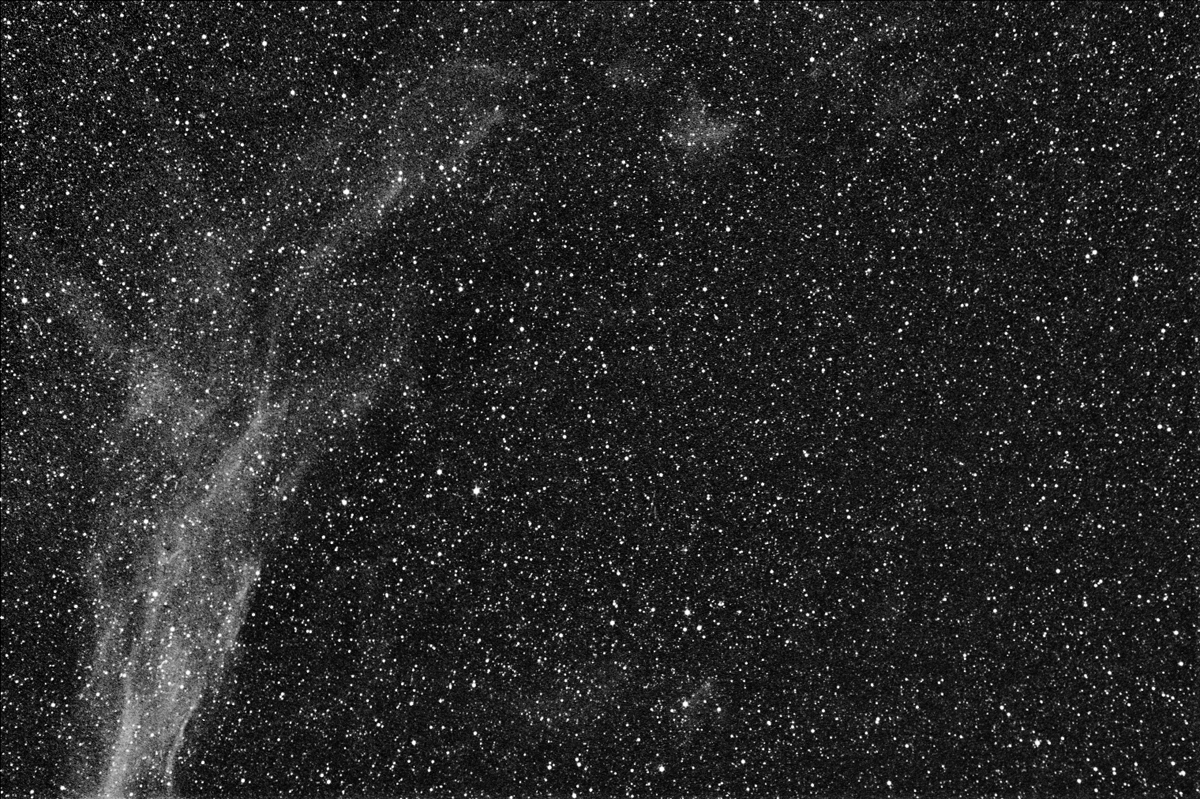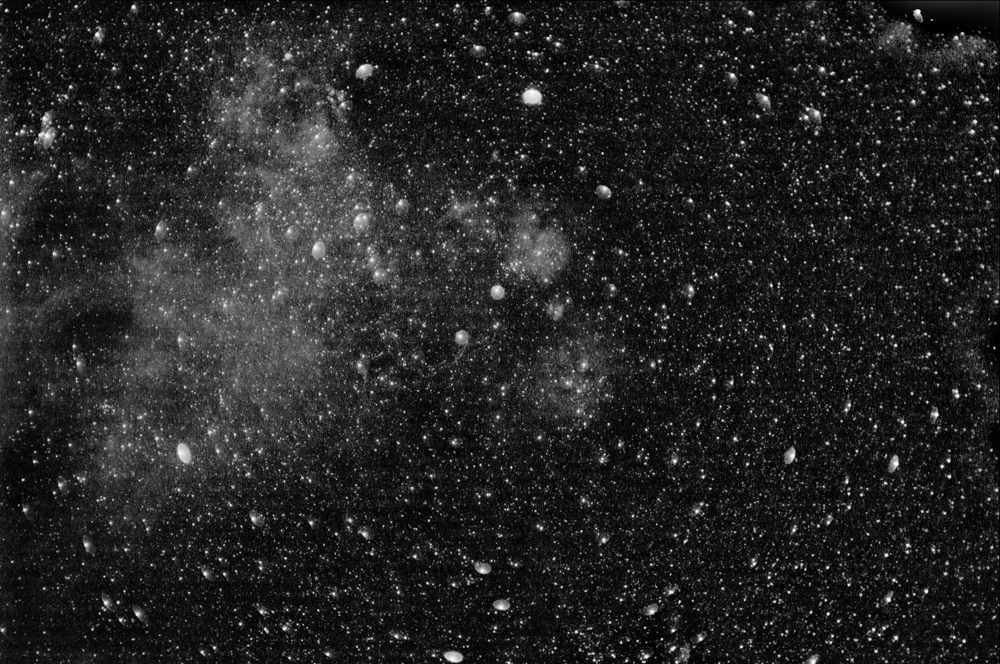
Combination of 14, 3 minute exposures using an H-alpha filter.
SBIG ST-8XE CCD. 35mm Nikon lens at f/2.
Moving southeastwards from Canis Major brings into view the rich Milky Way of Puppis and Vela. Both of these constellations, along with Carina and Pyxis, were part of the old constellation, Argo. The further east the observer looks, the brighter and richer the Milky Way becomes. The reason is that in Carina there is a nearby arm of the Milky Way. Containing numerous open clusters and many bright nebulae, this region is almost unknown to northern hemisphere observers due to is far southern declination.
Vela used to indicate the sail of Argo. In terms of interesting objects, it is rather similar in richness to Cygnus, having dozens of open clusters, a bright globular cluster, several emission nebulae and a large supernova remnent. It also contains numerous double stars and a rich portion of the Milky Way. The brightest Wolf-Rayet star in the sky is located within this constellation as a member of a beautiful double.

This first image was taken at f/2. Clearly visible are the halos surounding the brighter stars. Also noticible is the way the stars are distorted near the edges of the field. The small, bright nebula just above centre, looking somewhat similar to NGC 281 (The Pac-Man Nebula) is Gum 17. The very small nebula below it is Gum 15, while the larger, fainter nebula below that is part of the NGC 2626 complex.
The very large nebula to the left of centre is simply known as the "Gum Nebula". This is not the Vela supernova remnent. That object is located between the Gum Nebula and Gum 17. Several filaments of this nebula can be seen in the above image. In the above image, north is to the right.
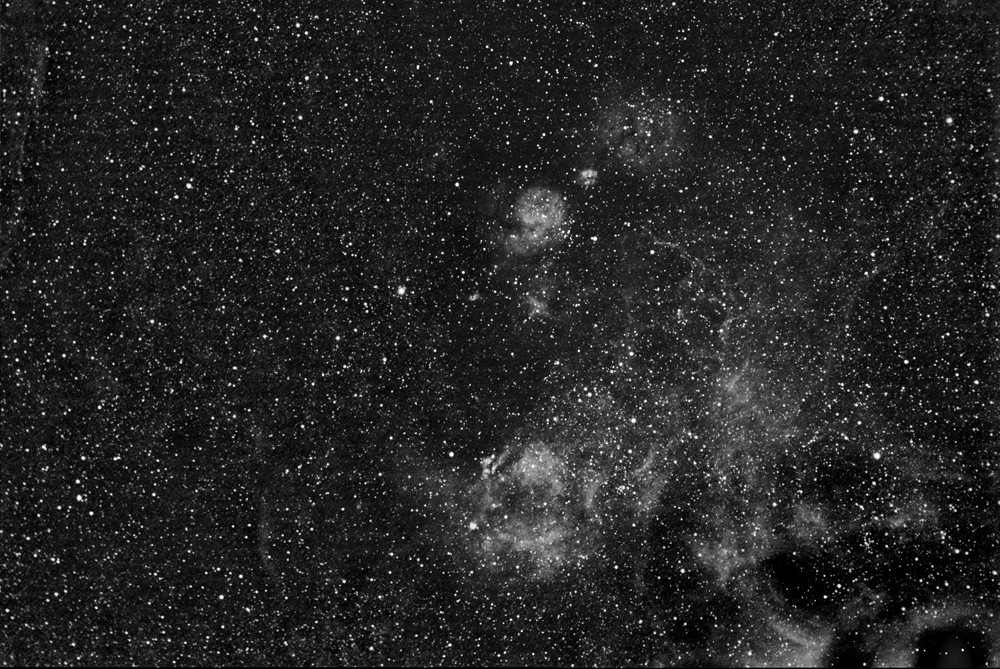
This image shows the benefit of stopping down the lens to f/4. The ugly halos around the stars are gone, as are the distrotions around the edge of the field. Imaging at f5.6 would have eliminated more of the stars, but I felt it was a more pleasing image if they were included. This image has been rotated so that north is up.
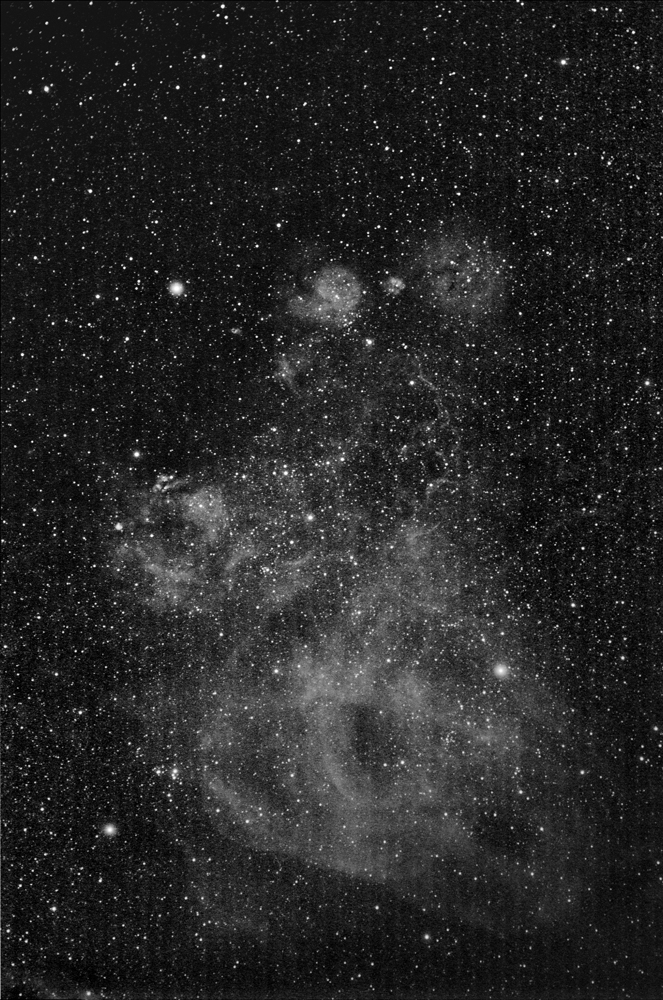
This image is centred a little further south of the preceeding image and shows the full extent of the Gum Nebula, along with several filaments of the Vela supernova remnent. The bright star to the right of the Gum Nebula if gamma velorum. At magnitude 1.8, this is the brightest Wolf-Rayet star in the sky. Wolf-Rayet stars are extremely bright, giant stars that have left the main sequence are have reached the Helium fusion stage in their cores. Their spectra show strong emission lines and they are vigorously ejecting material via very energetic stellar winds; as much as 20 earth-masses per year! Gamma velorum is also a very attractive double star. The companion is about 45 arc seconds away, making it easily visible in a small telescope. It has a magnitude of 4.8 and the spectrum is B3. The dazzling blue-while colour of the two stars makes for a beautiful sight.
The bright star to the left of the nebula is delta velorum. Above and to the right of the star, near the edge of the nebula, is the bright open cluster IC 2391.
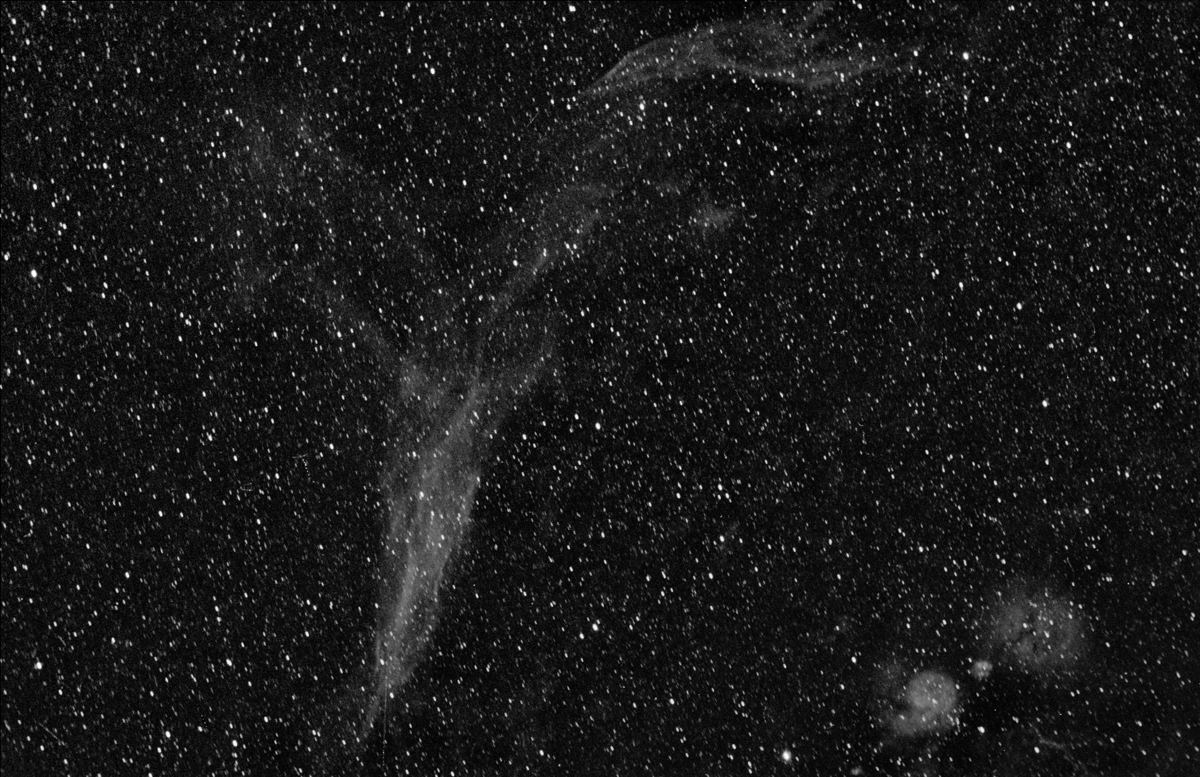
It was quite a surprise to see this beautiful plume of nebulosity appear in the image. None of the charts or software I have indicated its presence! The brightest parts of this nebula are actually over the Vela border into the constellation Antila; a constellation more usually associated with galaxies!
